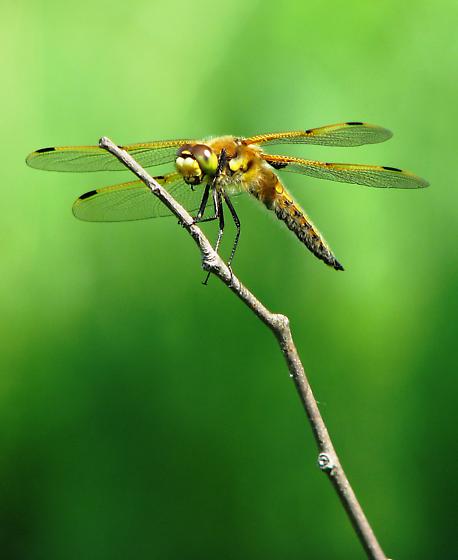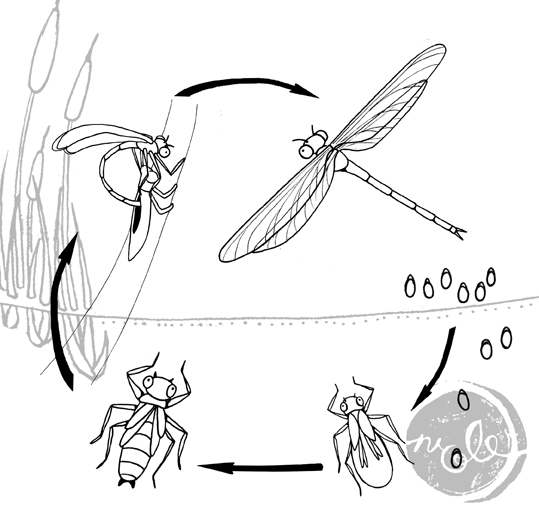Reproduction
The reproductive lifecycle of the Libellula
quadrimaculata is pretty simple. Although the male dragonflies are
pretty territorial. The male dragonfly finds a place to perch to
watch out for females, other males and prey. It will harass any male
or anything that it considers to be too close to its territory or
threatening to its territory. It will also attempt to mate with any
female that is remotely near its territory (Silsby. 2001). Females
will find places to perch away from the water so that the males do
not continually harass them. When the female is ready to reproduce
it will fly near the males territory. The male will then attempt to
win over the female. The male has a very unique reproductive organ.
It is has external genitalia which is located near the 9th abdominal
segment no where near the site of sperm production. Before the
dragonfly has sex the male has to transfer the sperm to the
abdominal area. When a female even gets close to a males territory,
the male will then ambushed the female, and sometimes several males will
ambush a female. The sexual encounter will then occur but only for a
few seconds. After the dragonfly has sex the female will find a
suitable place in in the water to deposit her eggs. The male is
present for this to watch out for predators and somewhat guard the
female. The Libellula quadrimaculata will then oviposit her eggs
meaning that she will lay her eggs in the water. She does this while still flying and she will just dip her abdomen into the
water, and flick it depositing the eggs in a gelatinous mass. The
eggs will then sink down and attach to vegetation or debris at the
bottom of the pond or lake until they are ready to hatch. (Corbet,
P.S. 1962),
(Lung, M. and Sommer, S. 2001).
She does this while still flying and she will just dip her abdomen into the
water, and flick it depositing the eggs in a gelatinous mass. The
eggs will then sink down and attach to vegetation or debris at the
bottom of the pond or lake until they are ready to hatch. (Corbet,
P.S. 1962),
(Lung, M. and Sommer, S. 2001).
The organism hatches into a larva which will live for approximately two years at the bottom of the pond or lake before emerging. The organism is known as being semivoltine meaning that it takes a couple years for the organism to complete development. The larva (nymph) stage has many of the distinguishing features of the full grown organism. Once its development is complete it will climb up the stems and vegetation that have emerged above water. This happens from mid April to early September. They will eventually shed there larva (nymph) state and develop into a flying Libellula quadrimaculata. (Corbet, P.S. 1962).
This picture was taken from BugGuide.net with permission from photographer Matthew Ireland. All rights reserved to Matthew Ireland. This picture is a good up close picture of the Libellula quadrimaculata and really helps demonstrate how big the eyes are in proportion to its body.
This picture was taken from Nicole Maloney Illustration with permission from Nicole Maloney. All rights reserved to Nicole Maloney. This picture is a diagram of the lifecycle of a dragonfly, starting with the organism having their sexual encounters, with the female then laying her eggs in the water, then the nymph hatches and grows and emerges from the brush shedding its nymph stage and becoming a dragonfly.
